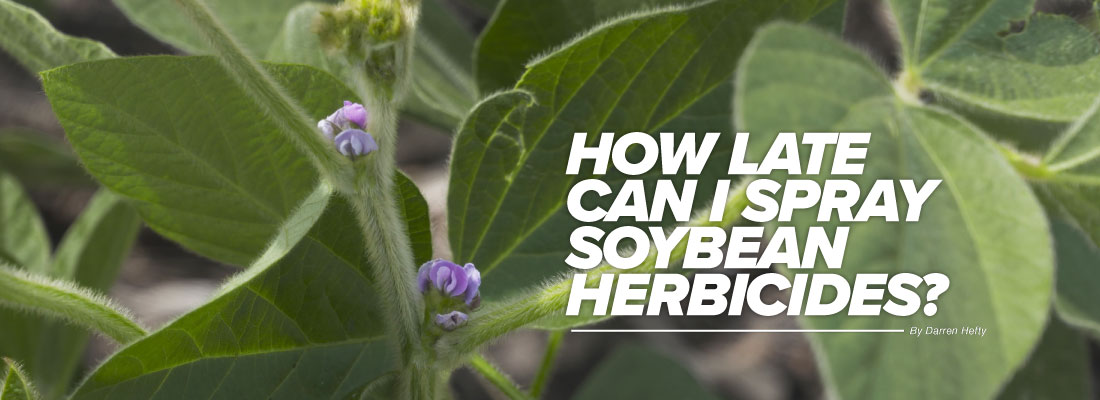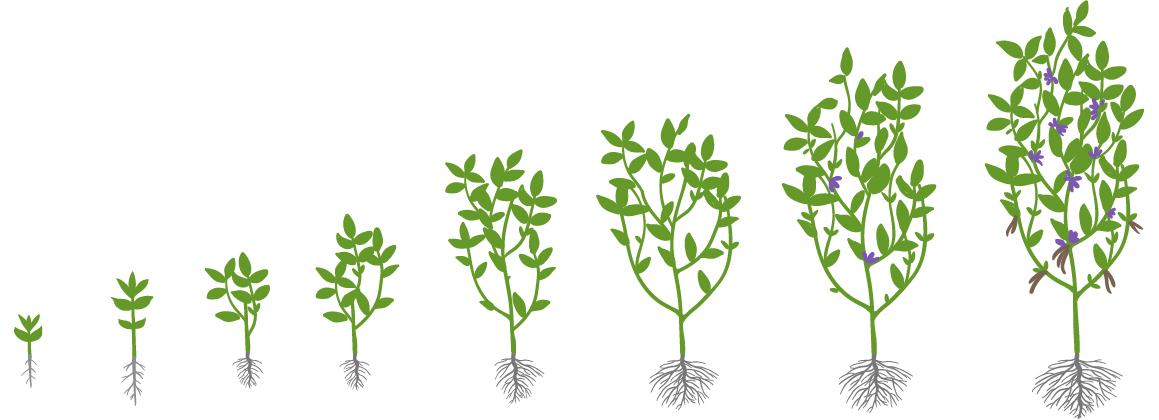
Indeterminate soybeans begin flowering (growth stage R1 or the first stage of reproduction) at or near the summer solstice (June 21). R1 also happens to be the time when many herbicides must be applied according to product labels. It’s also a great time for you to shoot for to be done with herbicide applications to reduce stress on the soybean plants at this critical developmental stage. As you can see, this is a very important time for your yield, profitability, and success in soybeans.
Early-season weed control is critical for yield, and we will always prefer to see you spray on the early side. However, most farmers spray post-emerge herbicides twice per season in soybeans, so today, we’re going to focus on your second pass. Late-season weed control after full bloom is generally more of a concern for harvest issues (green weeds) and weeds going to seed leading to future weed pressure in the field, but stopping late-season weeds can have an impact on yield, as well.
EVEN IF I CAN SPRAY LATER ACCORDING TO THE LABEL, WHY SHOULD I SPRAY BEFORE BLOOM?
The answer is simple: stress reduction.
Once your soybeans reach bloom stage, you don’t want them to focus energy on anything except producing yield. Applying herbicide, even to crops that are tolerant to the herbicide, takes energy for the plant to metabolize or otherwise deal with that product. We KNOW when soybeans are going to bloom. Getting your last herbicide application done is something you can schedule.

If you want to spray herbicides later in the season, be wary of the pre-harvest interval on products like Select Max and Resource.
If you’re trying to time a herbicide application as late as possible, here are the limits for some key herbicides. Please note that many of these require tolerant seed traits.
R1 (first flower): Liberty, Pursuit, Raptor
R2 (full flower): Cadet, Enlist One, FirstRate, Roundup, Warrant
Varies by State: Xtendimax, Engenia, and Fexapan, the dicamba products for Xtend crops. This is a tricky one, because the label says either R1 or no more than 45 days after planting, whichever comes first. However, state rules may limit application further. Most states say June 20 or June 30 for a cutoff. Typically, our advice is to spray before June 15, but whatever you do, make sure you find out the last spray date for your state and your situation.
WHAT IF WEEDS POP UP LATER?
If weeds come up after your field is blooming, the best option to stop the weeds and not hurt yield is to hand-pull the weeds. It’s possible you could cultivate the field, but before you do that, I’d suggest digging in between the rows to see how far across the root systems are. In our fields, the roots are all the way across our 30-inch rows, and I would be reluctant to consider cultivation because it will likely hurt yield by pruning off roots.
If you’re dead set on spraying an herbicide after R2, there are a few that still get used:
Cobra: R6 (full seed) or 45-day PHI (preharvest interval), whichever comes first
Resource: 60-day PHI
Select Max: 60-day PHI
Cobra and Resource are both burners that can be used for rescue treatments. I’m not saying they won’t hurt yield, but if you have enough of a weed disaster that you feel like you have no other choice, they are decent options. Select Max is for grass and volunteer corn control. I can’t say that in nearly 30 years as an agronomist anyone has ever asked to use this really late in the season, but it’s an option.
The key message here is to spray early and don’t take a chance that a weather event prevents you from spraying herbicides timely. If your soybeans get to first bloom, your choices for weed control go down dramatically and your risk of yield loss due to injuring your crop goes way up.

